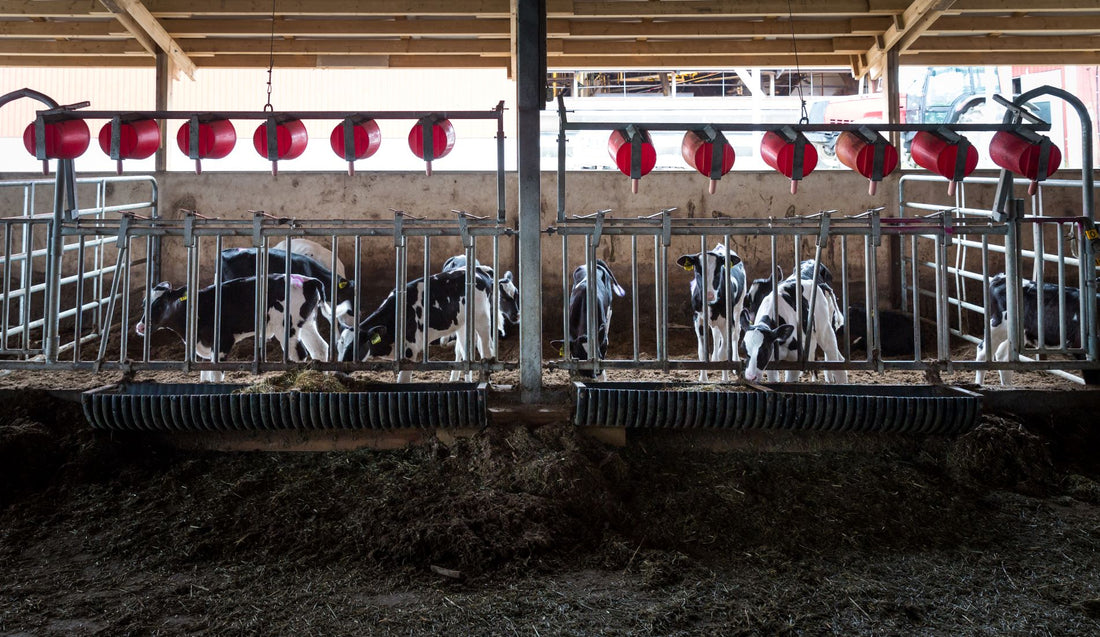Tips for the best calf barn design
Many have said afterwards that they spent too little time planning their calf facilities. Careful planning pays off quickly; the better thought out everything is, the fewer surprises there are.

How much time do you spend with milk feeding?
Adequate calf barn ventilation is vital
Consider the needs of both calves and workers in a future calf barn, regardless of the season. One of the most important factors in calf barn design is ventilation. However, this is usually given far too little attention. It is too strict to keep the calf from going to the side of the frost. At that time, we have already made a compromise on ventilation. The best possible ventilation for the calf is natural ventilation supplemented by a positive pressure tube.
Newborn calves have little resistance, so the air source entering the calf barn must be clean, fresh and draft-free. A properly positioned calf barn is on the windward side of the farm centre to minimize the transmission of airborne pathogens from older heifers and cows.

Do not compromise on calf barn ventilation!
Work smarter and more comfortable
As the situation of dairy farms growing bigger it would be even more important to draw attention to the fact that the calf barn operates on the principle of the all-in, all-out system. This means that animals in the same pen arrive and depart at the same time. At the same time, differences in the size and age of the animals are also evened out. With this practice, young and more vulnerable calves are not directly exposed to older calves that may be shedding infectious pathogens.
You can breed calves in individual pens, group pens and so-called hybrid models. It is good practice to keep calves in individual pen for the first few days, where you can easily keep an eye on them. This will also ensure that each calf learns to drink. At the age of three weeks at the latest, it would be good for the calf to switch to either pair or group rearing. With a friend, the calf explores and learns new things. Proper curiosity is an essential skill for a future dairy cow. The suitable group size is a maximum of 8 calves.
Read more about Single housing vs group housing

Mono-, group- or hybrid rearing: what suits you?
Feeding and watering the milk for calves
Numerous options are available for feeding milk or milk replacers for calves. When choosing a system, remember that each calf should have its own nipple and feeding container in use. When designing calf barns, we pay a lot of attention to maximizing our cow feeding table space. The situation when the calf is drinking milk is at least as important. Calf should not have to compete for resources during the first weeks of life. In this way, the calf learns the rules of behaviour at a feeding table from an early age and there is no need for a cow to boss other cows. Good table manners are part of good manners, even with calves.

Calf wants to eat in peace
Take machinery into account in the calf barn design
The most physical work in the calf barn is the drying and cleaning of the pens. Consideration should be given to the placement and construction of external doors and floor structures so that everything can be done mechanically. Old bedding of individual pens must also be able to be emptied with machine.
The calf kitchen is the heart of the calf barn. It’s more than just a 6 square meter space with a water basin, floor drain and a few shelves. It is ergonomic, the size meets the needs of the calf barn and is positioned in a way so that it supports its daily functions smoothly. When starting calf barn design with 4dBarn experts, you know you´ll also get a working calf kitchen plan.
Because the lifespan of a calf barn can easily be 15 - 20 years it is worth spending enough time to design it. Consider the different wishes and future needs. When you design a calf barn with 4dBarn, you make sure your calf barn doesn’t become a bottleneck in your farm.
Watch the video (7 min) of the cold calf barn of the Finnish dairy farm RantaHyry


